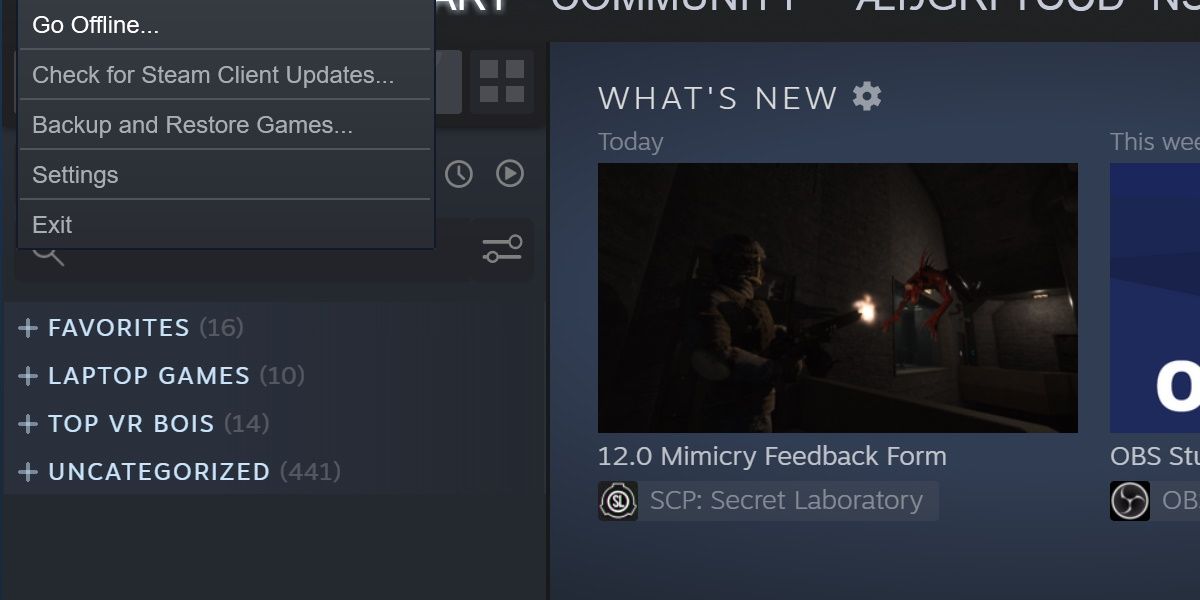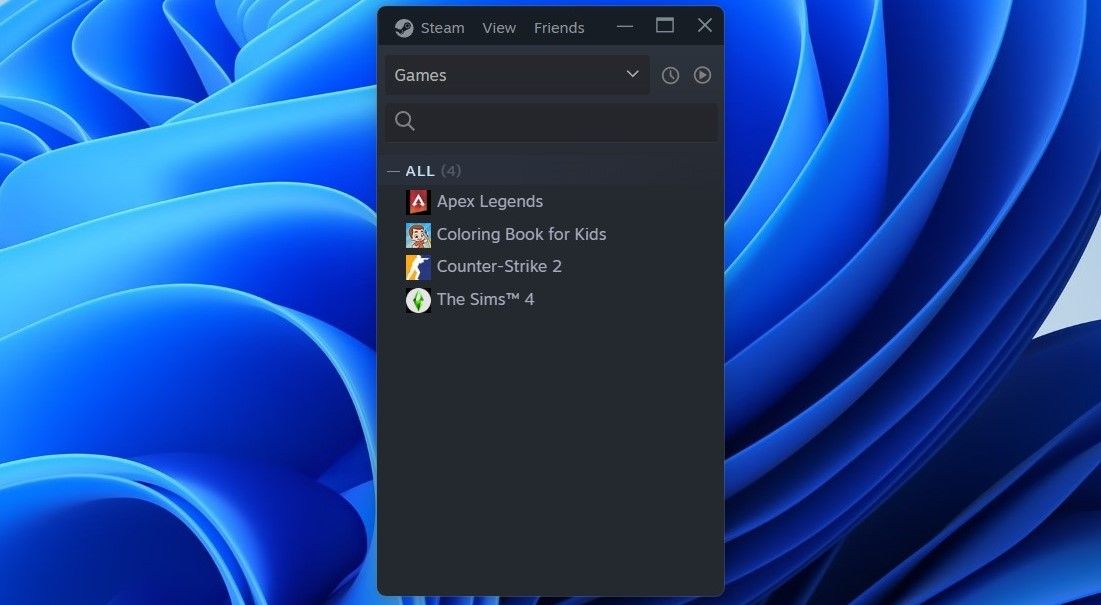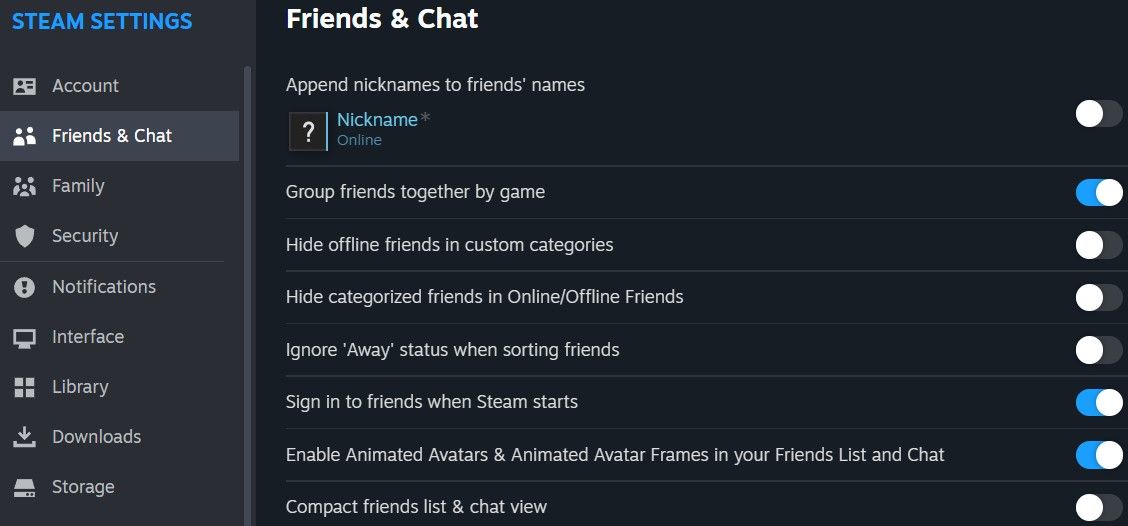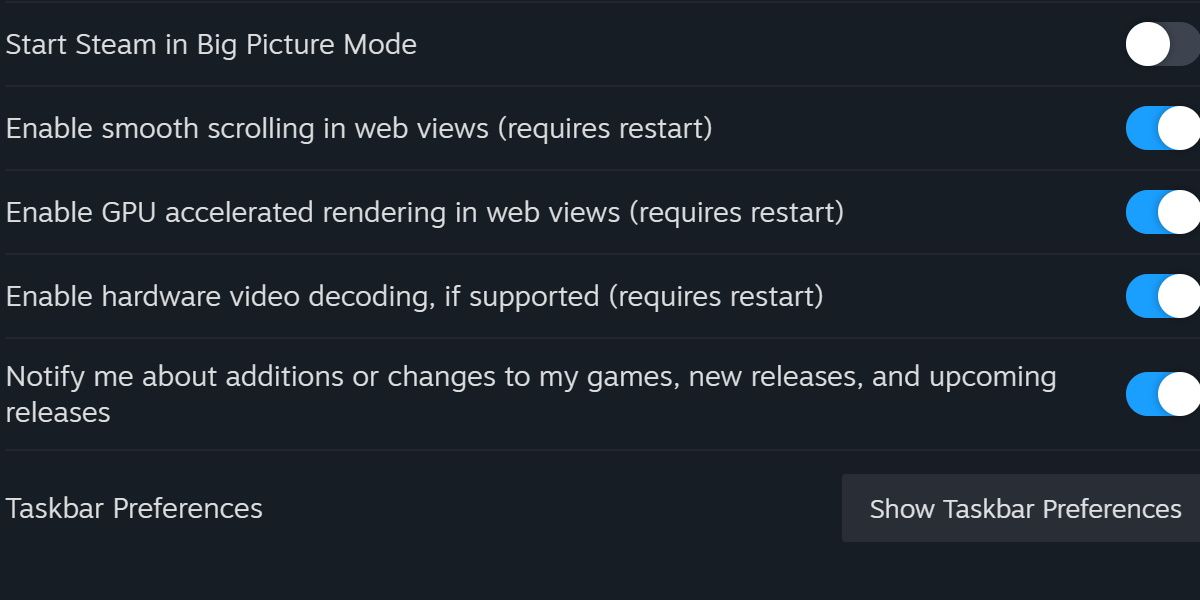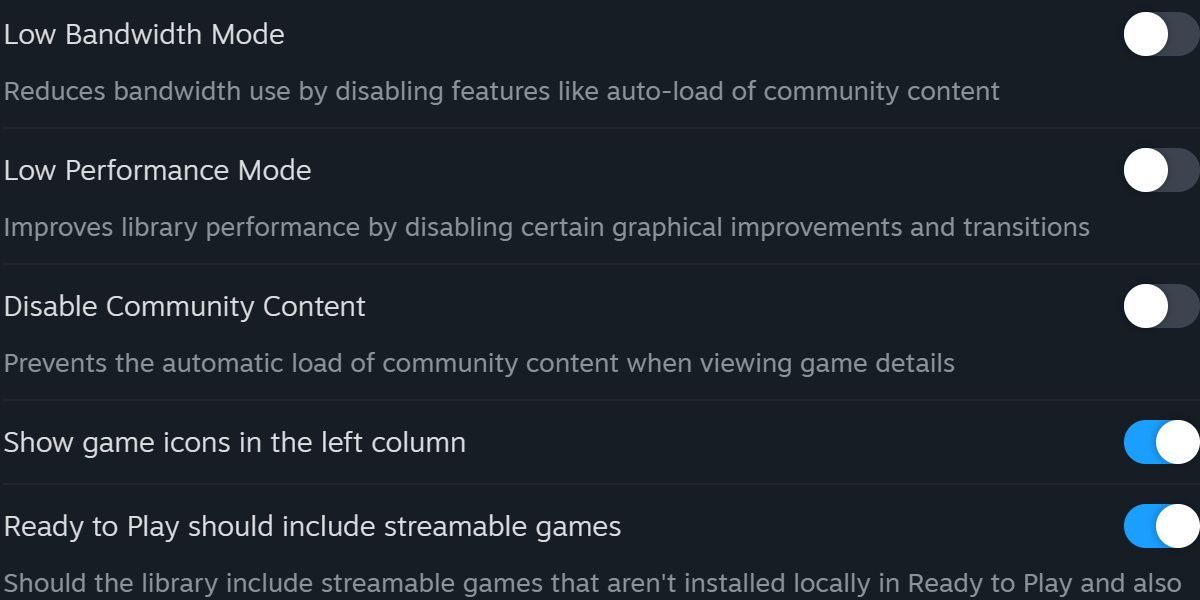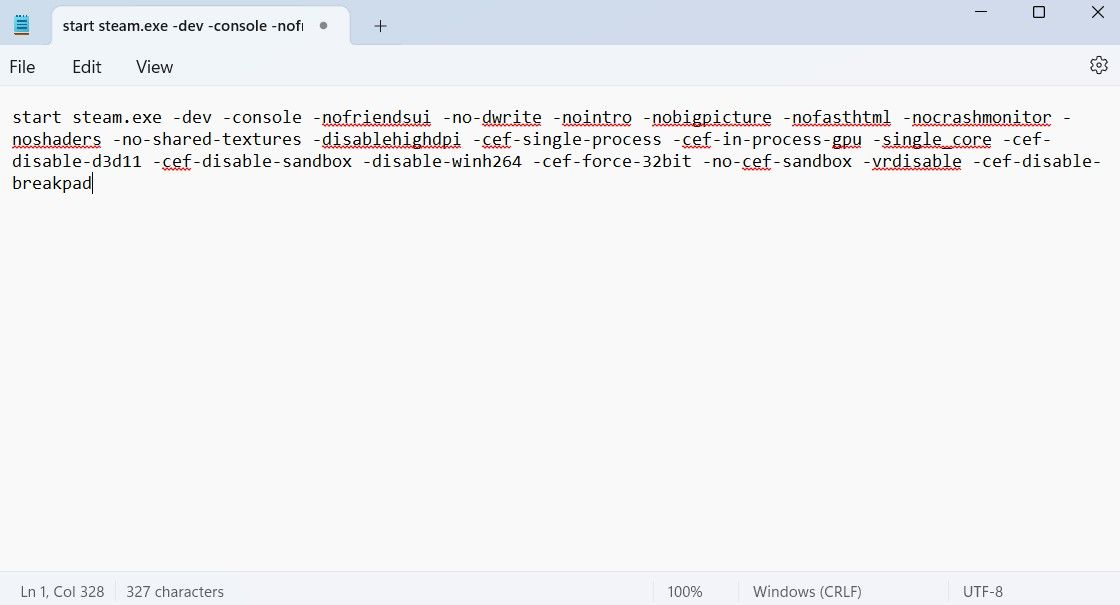Summary
- Steam’s multiple components, including the Steam Client WebHelper, can consume a lot of memory and impact CPU performance.
- To improve performance, try using offline mode, disabling hardware-accelerated rendering, and enabling low-performance mode.
- Launching the Steam Mini Games List or creating a custom batch file can further reduce memory usage for a more streamlined Steam experience.
Steam does a lot more than just store your games. Sometimes, these extra features can cause the Steam Client WebHelper to consume an abnormal amount of RAM on your PC. Fortunately, you can easily solve these RAM issues.
1
Use Offline Mode
One way to prevent multiple instances of Steam Web Helper from running is to run Steam offline. You can do this by hitting Steam from the main screen and pressing Go Offline… from the drop-down menu.
Do note that this has limitations, such as downloading new updates or connecting online to certain games.
2
Launch the Steam Mini Games List
When you launch Steam, it connects to the internet at several points. The app’s most memory-intensive processes occur when it connects to the latest news and developer blogs.
Thankfully, there’s a way around this without having to go offline—it’s called the Mini Games List. This launches Steam, but instead of opening all services, it only shows the games on your computer in a small window. Here’s how to open it:
- Press Win + R to open the Run dialog box.
-
From there, input the following string of text:
steam://open/minigameslist
- Hit Enter.
This will change the size of your Steam window, forcing it into a vertical slice rather than the more feature-full rectangle that Steam usually defaults to.
This alone will reduce several instances of the Steam Client WebHelper. To return to the default Steam look, select any option under the View menu.
3
Disable Unwanted Steam Features
If using Steam offline or in mini mode doesn’t suit your needs, you can reduce memory consumption by disabling some of Steam’s less essential features, such as animated avatars and the game overlay.
While these features add visual appeal and convenience, they can significantly increase memory usage. Hence, it’s best to turn them off if Steam uses too much RAM.
Head to Steam Settings > Friends & Chat and turn off the toggle next to Enable Animated Avatars & Animated Avatar Frames in your Friends List and Chat. Then, head to the In Game tab and turn off Enable the Steam Overlay while in-game.
4
Disable Hardware-Accelerated Rendering
Modern Steam uses a Chrome-based browser, but Chrome is known to be fairly demanding on your memory. Many of the problems Google Chrome presents can affect Steam when it connects to the web.
One setting can add a large amount of performance overhead if left enabled.
- Select the Steam button and open Settings.
- Scroll to Interface. You’ll see a variety of options to toggle.
- Find Enable GPU accelerated rendering in web views and make sure it’s toggled off.
- Restart Steam after making this change.
This will ease the burden that Steam’s web pages have on your available memory.
5
Enable Low-Performance Mode
Another simple toggle for performance gains is in the Library tab of the settings menu. Enabling the Low Performance Mode will disable certain animations when browsing through the Steam library.
This will sacrifice some eye candy for the sake of performance, but overall, it doesn’t reduce memory usage beyond superficial levels. If you’ve tried all these options so far and still find your system struggling, it might be time for more drastic measures.
6
Create a Custom Batch File for Minimal Steam
While the previous solutions can help regain a little memory, you might need something more substantial if you’re struggling to run Steam on your system.
Thankfully, there exists a combination of commands to completely strip Steam of its ability to create Steam Client WebHelper instances. There are too many commands to easily enter at once, so instead, we’ll make a batch file for it.
To create our batch file, head over to the Steam installation directory. This is the same place where steam.exe can be found. Once there, follow these steps:
- Create a new .txt file within the Steam directory.
-
Paste the following commands into the .txt file:
start steam.exe -dev -console -nofriendsui -no-dwrite -nointro -nobigpicture -nofasthtml -nocrashmonitor -noshaders -no-shared-textures -disablehighdpi -cef-single-process -cef-in-process-gpu -single_core -cef-disable-d3d11 -cef-disable-sandbox -disable-winh264 -cef-force-32bit -no-cef-sandbox -vrdisable -cef-disable-breakpad
- Rename the .txt file. Change the .txt extension to .bat.
Ensure that Steam is closed, and then open this .bat file. Steam should launch, looking very similar to the Steam Mini Games List from earlier. This version of Steam is extremely bare-bones. You will be unable to view friends, visit the store, organize screenshots, or check out the news, but you’ll be able to run Steam on essentially anything this way.
Steam may crash in certain circumstances using this configuration. If this is a problem, remove the command -cef-disable-breakpad from the batch file.
Steam has some great features, but not everyone needs them. If all you want out of Steam is a way to view and manage your games, and you don’t care for the social features, then consider some of the above methods. You might be surprised by how little RAM Steam needs to work.


